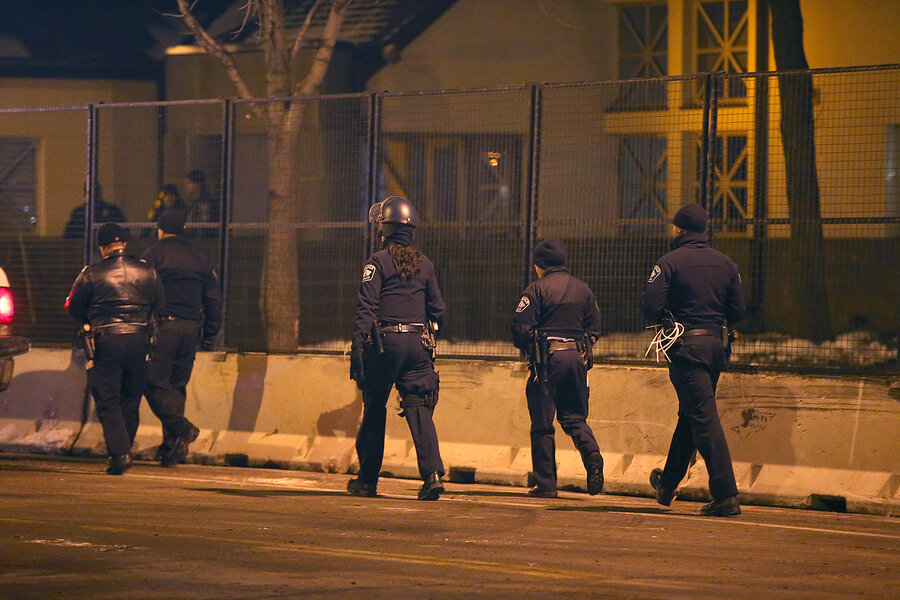Why police tore down Minneapolis Black Lives Matter protest camp
Loading...
Early on Thursday morning police cleared a protest camp outside the 4th precinct headquarters of the Minneapolis Police Department, where Black Lives Matter demonstrators had been stationed since shortly after the Nov. 15 shooting of a 24-year-old African-American man, Jamar Clark.
A federal investigation is underway to determine if Mr. Clark was handcuffed at the time he was shot in the head by a white police officer. Clark was supposedly interfering with paramedics who were trying to help Clark's girlfriend, but video surveillance of the scene has not been released. Clark died from his injury Nov. 16.
Given a ten-minute warning early Thursday, some 50 protesters were told to leave and city dump trucks were employed to remove tents and supplies. The eviction notice said that while “people have the right to peacefully demonstrate or protest,” structures and fires are not allowed on city property in accordance with Minnesota law.
Police removed the barricades blocking the street in front of the precinct, but put up a fence to keep people off the lawn in front of the station. Eight protesters were arrested, seven for “obstructing the legal process” and one for trespassing, reported ABC News.
The forcible eviction came two days after city officials asked the group to leave “because it was disrupting the neighborhood by blocking Plymouth Avenue and creating smoke from the fires used to keep demonstrators warm.” The move also likely stems from a Wednesday evening City Council public safety committee meeting, during which the council allowed the public to voice concerns.
"I do want to make notice to future protests that we will continue to support and facilitate your First Amendment rights and freedom of speech,” Police Chief Janee Harteau told reporters. “But, we will also support and enforce the ordinances of the city of Minneapolis and the laws of the state of Minnesota."
Though the rest of the protesters left peacefully, the Minneapolis chapter of Black Lives Matter immediately took to Facebook calling for a rally at City Hall.
“At 3:45 a.m. this morning, Minneapolis Police violently evicted the #4thPrecinctShutDown and tore apart the camp after 18 days of a 24/7 peaceful vigil. Today at 4pm we will converge on City Hall in response to our Mayor and City Council's continued brutality against peaceful protesters who have endured a white supremacist terrorist attack, police violence, and freezing temperatures to demand justice for Jamar Clark.”
The accompanying picture included the phrase “We ready! We coming!”
The group says their demands remain the same: release of the video surveillance, appointment of a special prosecutor without a grand jury for Mr. Clark’s case, and “a safety plan to protect Minneapolis residents from continued police violence.”
But Minneapolis Mayor Betsy Hodges it was time for the protesters to disperse, despite the fact the demands have not yet been met.
"We have been balancing the safety needs of the precinct with the right for people to protest and have their voices be heard," she said at a news conference.








